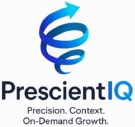Optimizing Workflows for Cost-Conscious Success: Streamline Your Marketing Machine.
Learn How to Optimize Workflows for Cost-Conscious Success: Streamline Your Marketing Machine.
Marketing automation has become an indispensable tool in today’s fast-paced digital landscape. It automates repetitive tasks, streamlines processes, and personalizes customer experiences, boosting efficiency and driving results. But with great power comes great responsibility, and optimizing your marketing automation workflows for cost efficiency is crucial for maximizing your return on investment.
Identifying Cost Crats in Your Workflow:
Before optimizing, you need to identify the areas draining your resources. Here are some common cost culprits:
- Redundant tasks: Are you manually sending emails or updating CRM entries that could be automated?
- Inefficient segmentation: Are you blasting generic messages to large, untargeted audiences, leading to low engagement and wasted resources?
- Unnecessary integrations: Do you have too many integrations, each with its fees and complexities, adding unnecessary overhead?
- Underutilized features: Are you paying for features you’re not using, leading to wasted subscription costs?
- Ineffective measurement: Are you tracking the right metrics to measure the ROI of your workflows, or are you flying blind?
Plugging the Leaks: Strategies for Cost Optimization:
Once you’ve identified the cost drains, it’s time to plug the leaks. Here are some actionable strategies:
- Automate ruthlessly: Identify every repetitive task and automate it. This frees up your team’s time for strategic work and reduces manual errors.
- Segment and personalize: Divide your audience into targeted segments based on their interests, behaviors, and demographics. Personalize your messaging for each segment to increase engagement and conversion rates.
- Streamline integrations: Consolidate your integrations to a manageable number and choose platforms that offer robust functionality and seamless integration.
- Audit your features: Regularly review your subscription plans and identify features you’re not using. Downgrade or switch plans to optimize costs.
- Embrace data-driven decision-making: Track key metrics like open rates, click-through rates, and conversion rates to measure the effectiveness of your workflows. Use data to identify areas for improvement and optimize your campaigns for better ROI.
Tools of the Trade: Technology for Cost-Effective Automation:
Several powerful tools can help you optimize your workflows for cost efficiency:
- Marketing automation platforms (MAPs) offer a comprehensive suite of automation, segmentation, and campaign management tools. Choose a MAP that aligns with your needs and budget.
- CRM software: Integrate your MAP with a CRM to manage customer data effectively and personalize interactions across channels.
- Analytics and reporting tools: Use analytics tools to track campaign performance, identify trends, and make data-driven decisions for optimizing your workflows.
Building a Culture of Cost Consciousness:
Optimizing workflows for cost efficiency is not a one-time effort. It requires a culture shift within your organization. Here are some tips to foster this culture:
- Align goals with budget: Clearly define marketing goals and ensure your budget allocation supports those goals.
- Promote transparency: Share cost data and performance metrics with your team to encourage cost awareness and ownership.
- Reward efficiency: Recognize and reward team members who identify and implement cost-saving measures.
Cultivating Cost Consciousness: A CFO’s Guide to Building a Thrifty Culture
The pressure to balance growth and profitability. While chasing ambitious targets is exciting, it’s crucial to remember that sustainable success hinges on responsible spending. That’s where building a culture of cost consciousness comes in. It’s not about penny-pinching but instilling a mindful approach to resource allocation, maximizing value from every penny spent.
1. Lead by Example: It all starts with leadership. My actions speak volumes, so I prioritize cost awareness in my decisions. I scrutinize expenses, negotiate aggressively with vendors, and champion initiatives that promote resource optimization. This sets the tone for the entire organization, demonstrating that cost consciousness isn’t just a departmental concern but a company-wide value.
2. Transparency and Empowerment: Information is power, and transparency is key to building trust. Sharing financial data, budgets, and spending patterns with employees empowers them to make informed decisions. They understand the bigger picture, the impact of their choices, and the opportunities for cost savings. This fosters a sense of ownership and accountability, encouraging everyone to be a cost-conscious steward.
3. Metrics and Incentives: We need clear metrics to track progress and motivate behavior. Develop key performance indicators (KPIs) that measure cost efficiency in different departments and roles. Tie these KPIs to performance reviews and incentivize employees who consistently demonstrate cost-saving initiatives. Recognition and rewards go a long way in solidifying the desired behavior.
4. Invest in Efficiency: While cost-cutting often gets the spotlight, sometimes the best way to save money is to invest strategically. We look for opportunities to automate manual processes, leverage technology to streamline workflows and implement cost-saving solutions like energy-efficient equipment. These investments may seem upfront, but they yield significant long-term returns by boosting productivity and reducing operational costs.
5. Foster a Culture of Innovation: Cost consciousness shouldn’t stifle creativity. Encourage employees to propose innovative ideas for reducing waste, optimizing resource utilization, and finding alternative solutions. Create channels for open communication and feedback where everyone feels comfortable sharing ideas. This fosters a collaborative environment where cost-saving solutions can blossom from unexpected corners.
Building a culture of cost consciousness is a continuous journey, not a destination. By leading by example, fostering transparency, empowering employees, and investing in smart solutions, we can create an organization where frugality becomes second nature. This mindful approach to resource allocation fuels sustainable growth, bolsters profitability, and ultimately leads to a brighter financial future for the entire company. Remember, every penny saved is earned, and in the long run, a culture of cost consciousness can be the difference between success and stagnation.
By implementing these strategies and cultivating a culture of cost consciousness, you can transform your marketing automation into a lean, mean, revenue-generating machine. Remember, optimization is an ongoing process, so continuously evaluate your workflows, adapt to changing trends, and embrace new technologies to stay ahead of the curve and maximize the value of your marketing automation investment.

